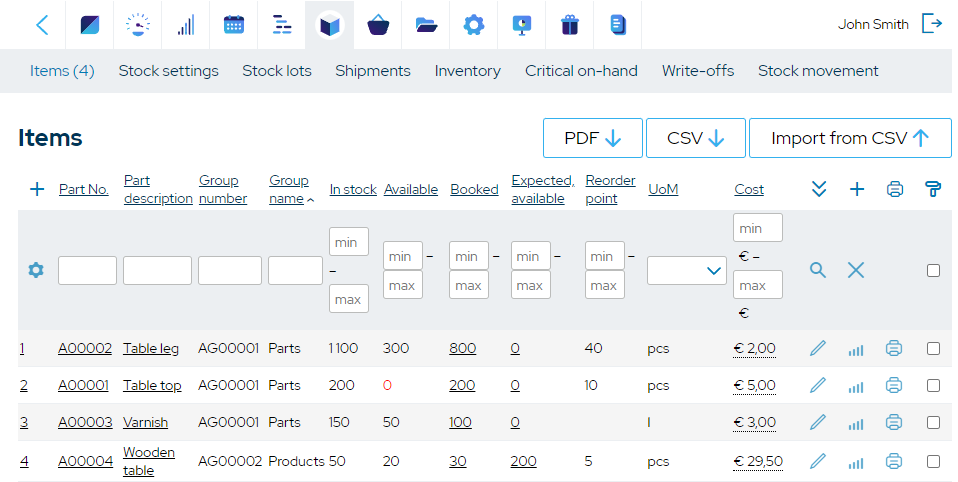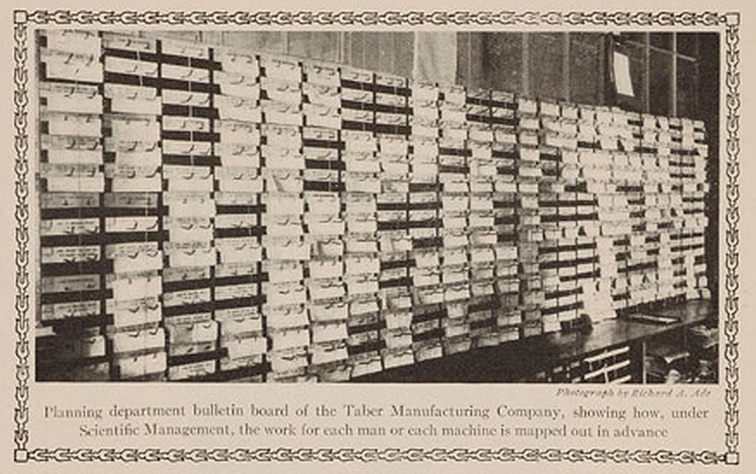What Is Vendor Managed Inventory (VMI) and How To Use It?
Vendor Managed Inventory is a practical supply chain management method that can lead to better inventory optimization, reduced costs, and stronger relationships between companies. But only if it’s done right.

You can also listen to this article:
What is Vendor Managed Inventory?
Vendor managed inventory (VMI) is a supply chain management method in which a supplier agrees to keep the buyer’s inventory optimized on their behalf. The buyer – usually a distributor or retailer, shares their inventory data with the supplier – usually a manufacturer, who decides the order size, replenishment period, etc.
In other words, the vendor is given extra responsibility to ensure that sufficient quantities of stock are consistently available at the buyer’s facility. VMI is also known as continuous replenishment or supplier-managed inventory.
In vendor managed inventory, ownership of the stock is usually transferred as soon as the goods are delivered and paid for. Any holding costs or overheads are still the buyer’s responsibility. This is contrasted with consignment agreements wherein the supplier remains the stock’s owner until it is sold to the end client.
In traditional inventory management, every company needs to keep its own stock and purchases optimized. Depending on the market, industry, or supply chain peculiarities, this mostly takes a lot of planning and effort. Vendor managed inventory can be an appealing alternative, provided there are willing suppliers available.
There is one big if. VMI demands a large degree of collaboration between the buyer and the supplier. Therefore, a good level of trust needs to be established before deciding to operate in this fashion.
Read more about consignment inventory.
Benefits of Vendor Managed Inventory
VMI brings plenty of potential advantages both for the buying company and for the suppliers. Let’s take a closer look at the main ones.
Benefits for the buyer
1. Easier management of purchases and inventory
Signing a VMI agreement with a supplier means the buyer needs to spend much less time on demand forecasting, purchasing, and inventory optimization. Big parts (though not all) of these tasks are now left to the supplier, including avoiding overstocks and stock-outs.
2. Reduced stock levels and overheads
Because inventory levels are monitored by the supplier, safety stock levels can be decreased or eliminated entirely. When a reorder point is reached, the stock will be replenished automatically by the supplier. This also means less standing inventory and corresponding overheads, and less inventory shrinkage from damaged or expired goods.
3. Reduced costs
Although having a vendor manage parts of your inventory is not free, the extra fee decisively offsets the combined time and funds you would otherwise need to spend on analyzing sales data and forecasting, optimization, and purchase order management. This can be a great avenue for diverting resources into other areas of the business.
4. Better communication with the supplier
Since inventory data is shared in real-time, the supplier will be instantly informed in case of a sudden demand spike. Conversely, when a disruption occurs on the supplier’s side and they are not temporarily incapable of restocking the customer’s inventory, they can notify the client much sooner.
Benefits for the supplier
1. Stronger customer relationships
A VMI partnership represents a tailor-made service on top of the supplied goods. It builds confidence in its clientele and helps to increase the vendor’s reputation as a trusted supplier. This gives VMI vendors a competitive edge over regular suppliers and means more reliable and assured sales over longer periods.
2. Easier forecasting
Having a comprehensive overview of the buyer’s stock requirements allows for creating highly accurate forecasts and developing a seamless delivery process. Not only does this shorten delivery lead times, but better communication also means that the supplier is up-to-date on market shifts which helps retain flexibility in case of sudden demand fluctuations.
3. Optimized inventory
Not only the buyer’s inventory is optimized in VMI. Knowing the ins and outs of the buyer’s stock requirements means easier inventory planning for the vendor as well. Full visibility of the client’s requirements and demand forecasts naturally helps to make sure the supplier’s inventory and production schedules stay lean.
4. More reliable sales, fewer carrying costs
All of the above means that vendors can produce or procure as much as is needed and when it’s needed for their clients. Carrying costs are reduced because there is virtually no need for standing stock, save for a small amount of safety stock. This also increases the vendor’s financial performance as inventory turnover can be greatly improved.
Drawbacks of Vendor Managed Inventory
Before concluding that passing the buck of inventory optimization to a willing supplier can seem like an all-around good idea, there are some caveats that need to be considered on both sides. Let us look at the potential disadvantages of VMI.
Drawbacks for the buyer
1. Relying on another company
Opting for vendor managed inventory means relinquishing a lot of control to another company. This may entail revising security protocols and doing other adjustments to a company’s functioning. Being unsure of the vendor’s capabilities and having security concerns is never a good basis for fruitful cooperation. Business-sensitive information handed over to a vendor can be difficult to mitigate, should issues arise in the agreement. All that is why trust is key to a successful VMI agreement.
2. Difficult re-sourcing
Disruptions may occur with even the best suppliers. It might make sense to keep a list of backup suppliers for at least the most critical goods. Additionally, demand for goods may change drastically in many industries, and the market may necessitate completely rethinking the product offer. In this case, it is crucial that existing VMI agreements are flexible enough to allow for opting out of being supplied stock that is no longer necessary. Buyers may also face the risk of getting stuck to a supplier and having to pass up on more lucrative potential partnerships.
Drawbacks for the supplier
1. More responsibility
On top of simply supplying goods on time, a VMI partner takes responsibility for the successes and failures of its clients. Being the supplier in a VMI agreement naturally increases the workload of the company as inventory management is one of the most intricate aspects of a business. Managing two or more separate inventories in parallel means a need to invest in extra expertise, electronic data interchange systems or EDIs, and hiring extra managers.
2. Unfeasible or unprofitable with small orders
All of the abovementioned extra effort that comes with checking, analyzing, and optimizing the buyer’s inventory also means extra labor costs. Fundamentally, managing a client company’s inventory only pays off if the business they get from them is large enough to turn a profit. Many VMI suppliers will set pricing limits that need to be agreed upon beforehand. A VMI program with very small companies or ones with very volatile demand can be risky for suppliers.
How to implement Vendor Managed Inventory?
If you have weighed the pros and cons of vendor managed inventory and have decided it is a good fit for your company, here are the basic steps for starting a partnership.
Use an online inventory management system
Vendor managed inventory cannot be effectively managed without online software. Whether it’s a spreadsheet shared between the parties via cloud storage or dedicated vendor management software, it needs to be online in order to provide the supplier with real-time access to the buyer’s inventory data.
This process is all the easier, the more functionality the selected VMI solution has built-in. Modern cloud-based inventory management software (IMS) goes further from simple data sharing and can simplify demand forecasting and order management as well. Many providers also include built-in integrations with third-party fulfillment platforms and eCommerce apps like Shopify.
Draw up an iron-clad agreement
In business, trust needs to be backed up with a written agreement. Using a standard supplier agreement is not nearly enough and a VMI-specific agreement needs to be drawn up. The agreement needs to specify the terms regarding inventory locations, inventory ownership, level of data access, delivery triggers, minimum order size, and other aspects of the inventory replenishment process. It should also include practicals like payment info, applicable performative KPIs, etc.
The key is agreeing on a contract that satisfies both parties and cements expectations. Some examples can be found here.
Provide access to the supplier
When an agreement has been signed, the supplier has to be given access to the data according to the level of access specified in the contract. This may include software areas such as inventory, sales, production, product returns, goods in transit, backorders, etc.

Evaluate performance
KPIs related to supplier performance management have to be established in the VMI agreement. During the partnership, these metrics are periodically reviewed in order to evaluate the vendor’s compliance with the agreement. Apart from helping in decision-making when it comes to continuing the partnership, communicating the KPIs to the supplier can also help them refine the replenishment processes.
Key takeaways
- Vendor managed inventory is a supply chain management method wherein a supplier is given access to the buyer’s inventory data and becomes responsible for optimizing and replenishing their stock.
- The benefits of VMI for the buyer include more efficient inventory and procurement management, reduced stock levels and costs, and better communication with suppliers.
- The benefits of VMI for the supplier include stronger customer relationships, easier forecasting, more efficient two-way inventory optimization, and more reliable sales.
- The disadvantages of VMI for the buyer include difficulty giving up control over their inventory and the possible complexity of changing vendors.
- The drawbacks for the suppliers include increased responsibility, added complexities and costs to the inventory management process, and potential challenges with companies that require smaller orders or have very volatile demand.
- A proper vendor managed inventory system almost always implies using inventory management software or an ERP/MRP system on the buyer’s behalf so the supplier has sufficient access to the inventory data.
- Other basic steps towards implementing VMI include negotiating a waterproof contract, evaluating vendor performance, and above all, building trust between the companies.
Frequently Asked Questions
VMI or Vendor Managed Inventory is a supply chain management method in which the supplier (or vendor) is made responsible not only for replenishing the buyer’s inventory but also for keeping the stock levels optimized. VMI works through a mutually agreed upon VMI contract and almost always presupposes that the buyer use inventory management software through which the supplier can access the buyer’s inventory data.
For the buyer, the pros of vendor managed inventory include more efficient inventory and procurement management, reduced stock levels and costs, and better communication with suppliers. For the supplier, the pros include stronger customer relationships, easier forecasting, more efficient inventory optimization, and more reliable sales. The cons include difficulty in giving up control to another company, the possible complexities arising from having to change vendors, and added complexities and costs to the supplier’s inventory management.
A prominent example of companies using vendor managed inventory would be supermarket chains like Walmart. As these businesses offer a host of different products, making the suppliers responsible for restocking the warehouses makes a lot of financial sense, especially because the buyer is only interested in keeping stock of goods with actual demand.
In VMI agreements, stock ownership is usually managed like in normal supplier relationships, meaning that goods change ownership once they are paid for and delivered. This is contrasted with consignment inventory, wherein the goods are delivered to the consignee’s warehouse or point of sale (POS) while still owned by the consignor and remain the former’s assets until sold to end customers.
Read more about: Vendor Management – An Essential Guide for SMEs




